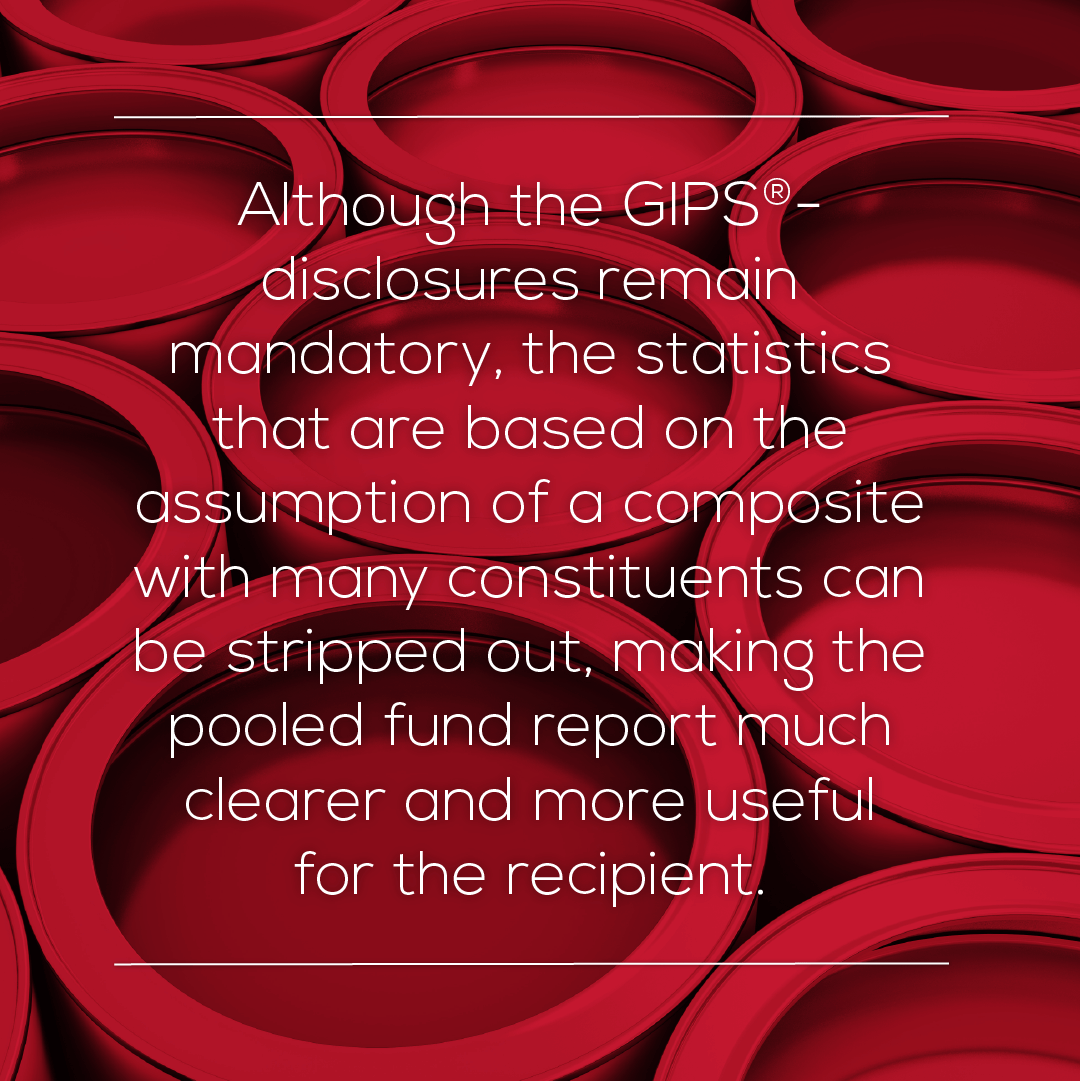It has repeatedly been mentioned that GIPS® 2020 is the biggest change in the standards since their introduction 20 years ago…
With the new release of the standards, the scope has been widened to make them more attractive to a larger audience. Many firms which have been compliant for a long period of time are now concerned about the efforts it may take them to remain compliant. However, there is no need to worry for firms which are already compliant, in some situations things may even become easier. A lot of changes are also only optional and not mandatory, so it’s an offer, not a duty, and only where this option is beneficial would one want to adopt it.
 One example of this will be the future treatment for pooled funds which is now clearly structured in 2020 revision of the standards.
One example of this will be the future treatment for pooled funds which is now clearly structured in 2020 revision of the standards.
In the current version of the Standards, pooled funds are treated like any other financial product, so if discretionary they have to join a compliant composite. If no composite exists that is represented by the pooled fund’s strategy, it has to be set up accordingly. Many firms dealt with this by defining one composite for each of their pooled funds, resulting in a significant number of composites with just the single fund included.
Firms now no longer need to treat composites like this if they don’t want to. Firms will now be able to report the pooled funds as they are. Although the GIPS®-disclosures remain mandatory, the statistics that are based on the assumption of a composite with many constituents can be stripped out, making the pooled fund report much clearer and more useful for the recipient. See more details in the relevant paragraphs of the GIPS® 2020 standards edition for Firms. The firm just needs to ensure that a list of their pooled funds is added to the list of composites which has to be supplied upon request. So, there is no change in administration, but the firm can better report their pooled funds as they are, instead of wrapping them into a composite report.
However, if a firm wants to continue with the composite reporting they are free to do so. The only change is for firms that have composites matching a pooled fund’s strategies but keep them in separate standalone-composites due to the different legal structure. This is now no longer possible, pooled funds must now contribute to composites if the strategy fits – but in addition the firm can report the pooled fund separately in GIPS®-compliant shape to investors that are interested in this investment-product. Firms that want to go into more granular details in their Pooled Fund Reporting are invited to do so, for instance by disclosing the share of uncalled committed capital held in the Fund, but this again is not a requirement, but an option offered.
So, the revision of GIPS® for 2020 offers the opportunity for firms to revisit their composites and enhance their profile by presenting more tailored reports to their prospects without burden.
{{cta(’99a1eb24-777f-49c9-a281-0adf38fc8341′)}}